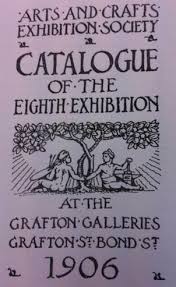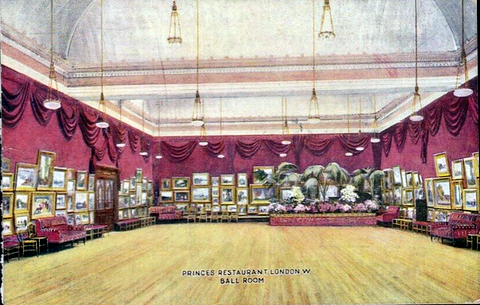GRAFTON GALLERIES
The date of foundation of the Grafton Galleries is not certain some sources give 1873, when it had an address in Liverpool but the gallery was incorporated in London on 16 June 1891, and opened in February 1893 at 8 Grafton Street, with an extensive suite of rooms extending to Bruton Street and from 1896 the gallery was in rooms in Bond Street, Piccadilly with the Royal Institute’s picture galleries on the top floor of Princes Restuarant, the owners of the property. The first manager was Francis Gerard Arpinius Prange (1841-12 April 1899), who was a cotton broker from Liverpool and after his death, Venant Benoist (1854-), a French-born caterer working in Piccadilly, was the manager, when the buildings were also let out for receptions, dinners, concerts, and dances but Benoist resigned in 1906. Early in the 1900s, Roger Eliot Fry (1866-1934) was an advisor to the gallery, and he asked William Rothenstein (1872-1945) to advise him on exhibition content. Numerous exhibiting societies used the premises including the Arts and Crafts Exhibition Society, the Royal Society of Portrait Painters, the Ridley Art Club from 1897 to 1919, Royal Society of Miniature Painters Sculptors and Gravers from 1905 to 1926, International Society of Sculptors Painters and Gravers and the Women's International Art Club. In 1905 the Parisian dealer Paul Durand-Ruel (1831–1922) showed the first substantial exhibition of the Impressionist paintings seen in London. This show achieved little publicity, and it was not until 1910 that Roger Fry mounted the first of his two Post-Impressionist exhibitions introducing a shocked public to Cézanne, Gauguin and Vincent van Gogh. Two years later in 1912, rubbing salt into a still open wound, he attempted to convert them to Matisse and Picasso. This notoriety achieved unrivalled publicity for the Grafton. During the period 1916-20 the Gallery hosted exhibitions mounted by the London Salon of the Allied Artists Association and in 1922 it was noted that the premises were no longer available for exhibitions. In 1930 a Mr Hurcomb of Piccadilly bought the lease and converted the premises into an auction house but it was still occasionally used for exhibitions until around 1936. There is an unconnected New Grafton Gallery.
Works by This Artist

|
|

|
|